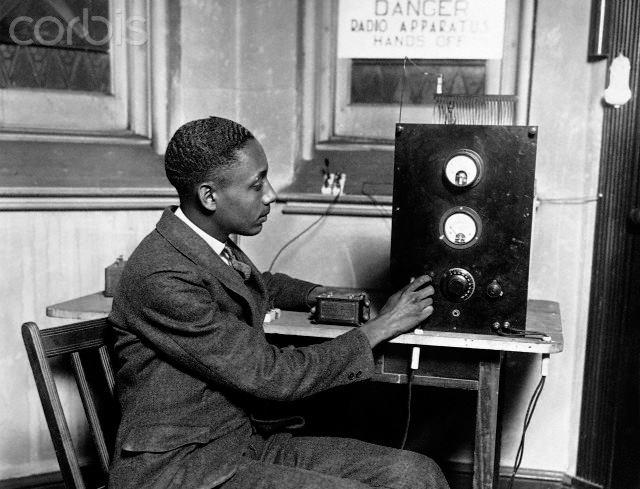Rufus P. Turner with early radio, 1926

First Black radio station operator Rufus P. Turner working on an early radio, likely at his W3LF, 1926.
"A midget radio built on a pin one and a quarter inches long will be on exhibit at the World’s Fair as a feature of the radio amateur convention in August [1933]. The radio set is the invention of Rufus P. Turner of Washington, D.C., former student at Massachusetts Institute of Technology."
--The Crisis, Vol. 40 Iss. 8 (August 1933), p. 186
Rufus Paul Turner (1907-1982) was an academic, engineer, and author who published on semiconductor devices, technical writing style, and poet-novelist Charlotte Smith. After three decades working with electronic devices – including developing the first practical transistor radio – he earned a doctorate in literature at age 52 and became an English professor. He wrote over 40 books and 3000 articles during his six-decade career.
In 1925, still a teenager, he built what was then the world's smallest radio set, and was awarded the second commercial radio operator's license in the third district. His station, W3LF, was "the first radio station licensed to a black broadcaster in the U.S." By 1928, he operated W3LF as a 15-watt station on Franklin Street NW in Washington, D.C. He also operated a station for his neighborhood church. Although he did not initially pursue a college degree, Turner's experience with electronics led him to a variety of engineering positions. He was a licensed professional engineer in California and Massachusetts. He taught electronics at a vocational school and the University of Rhode Island, and business communication at the University of Southern California.
Turner was involved with creating the 1N34A germanium diode at Sylvania in the 1940s. He began experimenting with germanium transistors soon after their invention in 1947. In 1949, before transistors were commercially available, he published the popular article "Build a Transistor", considered a "benchmark publication" in amateur radio.
Adapted from Wikipedia article "Rufus P. Turner" (last edited 29 December 2021)